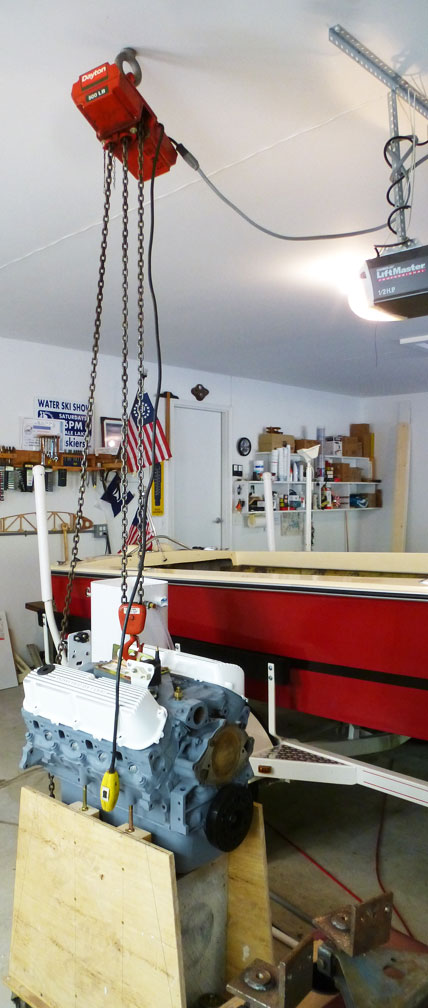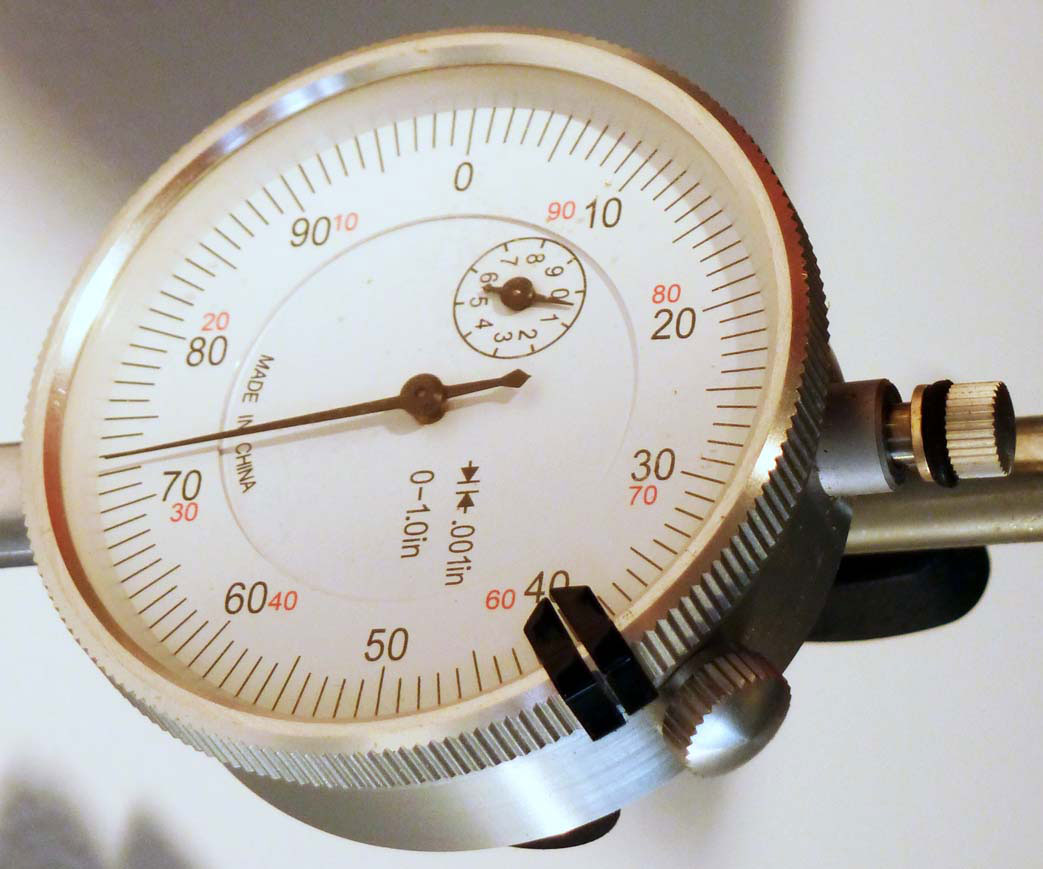|
Grant MacLaren's 1972 Correct Craft Skier MacSkier
The real work would be on the boat itself; the engine mount lag bolts could not be tightened, good evidence of rot in the stringers. But the power plant would have to be removed one way or 'tother. Strutman thought the gantry in his hangar would lift it. Well, it lifted it, but not high enough to clear the gunnels -- even when we removed the trailer wheels; lowering the hubs to the hangar floor. So I hauled the engine -- loose in the boat -- to Mark's. Mark and his fork-lift made an easy job of "pulling the engine." Over the winter, I removed more things from the engine for cleaning and painting, and made new mounts for the new coil, ballast resistor, starter solenoid, etc. I readied the new aluminum valve covers, new starter, new single-wire alternator, etc., etc. The big surprise came when one of Mark's technicians began tearing into the engine and found a cracked block! In the water jacket, forward on the port side. Long story short --> Todd at Terry's Machine Shop in Bridgeton found a replacement block and rebuilt the 302 -- using the 351 heads he found on the engine. Todd has been doing Mark's machine work for many years; his walls are covered with evidence of many successful competition boat and car engines. Friend Bud loaned me his grandson's cherry picker and friend Joe insisted on hauling the engine to my garage. Well, there it sat -- on the floor, blocked in place with a 2x4. I quickly built a plywood stand atop a furniture dolly, lifted the V-8 with the cherry picker and returned the picker to Bud, who returned it to his grandson. We found a piece of 2" x 2" x 1/4" angle iron long enough to span the lower chord of four roof trusses in the garage. John gave me a hefty eye-bolt (1" diameter threads). We drilled the angle iron and the ceiling dry-wall to accomodate the eye-bolt and installed it above a vacant bay in the garage, Joe contributed a 500# Dayton electric chain hoist to the project. So it will be very easy to hoist the engine (with transmission) higher then the boat's gunnels, position the boat (on its trailer) and lower the power plant into the boat. We'll probably install the manifolds, hoses, etc. after the engine is back in the boat. All this to be done after we design and build new motor mounts and new dipstick assembly. Both of these projects should be finished October 20, 2014. Welding by Haslag Steel in Wahington, MO. (This written 10/19/14.) Did I mention the carburetor is being rebuilt?

Click photo for larger image.
We have some doubters amongst us, so . . . Dial indicator zeroed with hoist unloaded. (Ceiling probably already deflected a bit by weight of lift, weight of door opener, etc.)

Click photo for larger image.
Below: With engine lifted free of stand = 0.07". Note -- indicator face rotated for ease of reading.

Click photo for larger image.
BTW, 1/16 inch = .0625 inch.
Another pretty good web page by Grant MacLaren
|